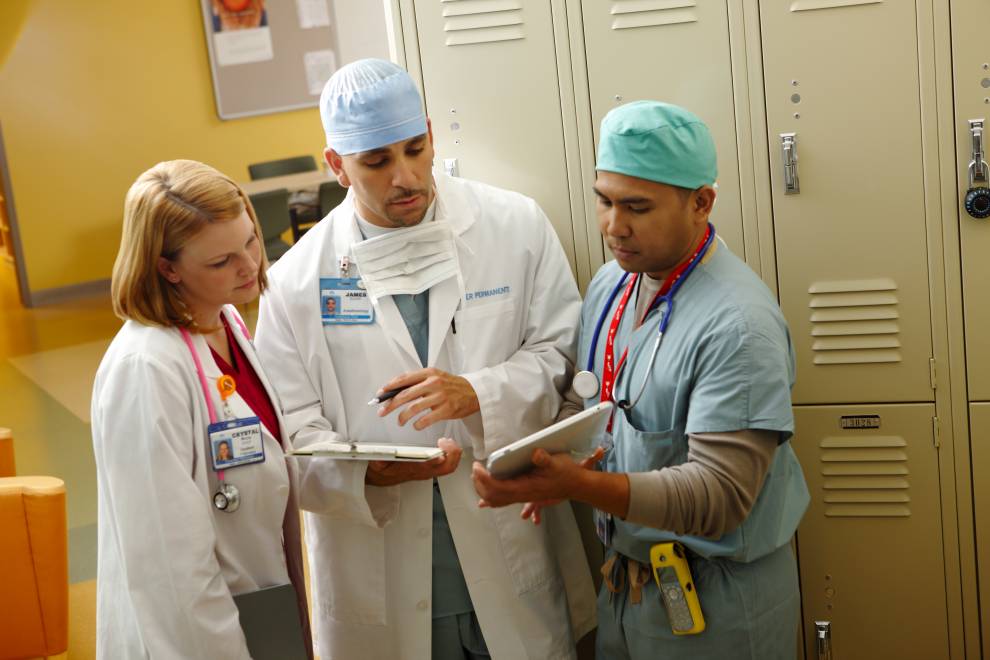
Going Green in the OR

Inhaled anesthetics make complex procedures such as open-heart surgery painless for patients, but they can also harm the environment. Like CO2, the best-known greenhouse gas carbon dioxide, anesthetic gases trap energy from the sun in the atmosphere and warm the planet.
In September 2018, Kaiser Permanente South Bay Medical Center took steps to help green the anesthesia used in surgery and reduce its carbon footprint. Based on a practice the Kaiser Permanente Northern California Region previously adopted, the South Bay facility began substituting the anesthetic gas desflurane with the less potent gases sevoflurane and isoflurane in the operating room. After used anesthetic gases are expelled outside the medical center, the more environmentally harmful desflurane stays in the atmosphere for approximately 10 years, compared to 1.2 years for sevoflurane and 3.6 years for isoflurane, according to research on anesthetic gases.
The significant impact of climate change on the environment and human health affects everyone, especially vulnerable individuals and communities. Kaiser Permanente has pledged to become a carbon neutral organization in 2020. Changing anesthetic gases to reduce negative environmental impact helps contribute to that broad effort.
“Choosing to use more environmentally friendly anesthetic gases enables us to greatly reduce our carbon footprint,” said Alexander Chin, MD, chief of anesthesiology, Kaiser Permanente South Bay Medical Center. “We anticipate this change will decrease our yearly greenhouse gas/CO2 emissions by the equivalent generated by approximately 50 average-size passenger vehicles driven for one year.”
The daily reduction of greenhouse gases is also substantial. One hour of desflurane use equals the greenhouse gas effect of driving 200 to 400 miles, compared with 18 and 20 to 40 miles of driving per hour of use of sevoflurane and isoflurane, respectively. Desflurane is the most expensive anesthetic gas, so the changeover also boosts the bottom line, saving an estimated $28,000 annually at the South Bay Medical Center.
“It is our obligation as a health care provider to minimize our negative environmental impact,” said John Yamamoto, vice president, Community Health and Government Relations, Kaiser Foundation Health Plan and Hospitals. “This impressive change in practice exemplifies how Kaiser Permanente is seeking ways to do business differently to enhance the health of our members and the communities we serve, while maintaining high-quality, affordable health care. Even a slight change can make a meaningful difference.”
Inspiring change
Late last summer, Dr. Chin spearheaded an educational campaign at the South Bay Medical Center to increase awareness among the anesthesiologists and their teams about the negative impact of desflurane on the environment. Many providers are more comfortable using desflurane because they trained with it, but there is minimal difference to the patient’s medical care which gas is used, according to Dr. Chin.
“We wanted to make the educational process as collaborative as possible,” Dr. Chin said. “Once people became aware of the issue, they realized the change made a lot of sense. They then voluntarily began reducing the use of desflurane.”
To make it easier for providers to choose the anesthetic gases that cause the least environmental harm, sevoflurane and isoflurane are readily on hand in the OR. Desflurane is still available, but now it is only kept in a nearby storage room for access if needed.
Although the anesthesiology department’s goal was to reduce the use of desflurane by half at the end of 2018, it achieved a remarkable 90 percent decrease. “To make this kind of change happen, it truly took the buy-in of the whole team,” said Allison Tse, MSN, CWCN, assistant department administrator, Anesthesia Department, who served as project manager for this initiative.
To learn more about Kaiser Permanente Southern California’s work in the community, please visit http://community.kp.org.